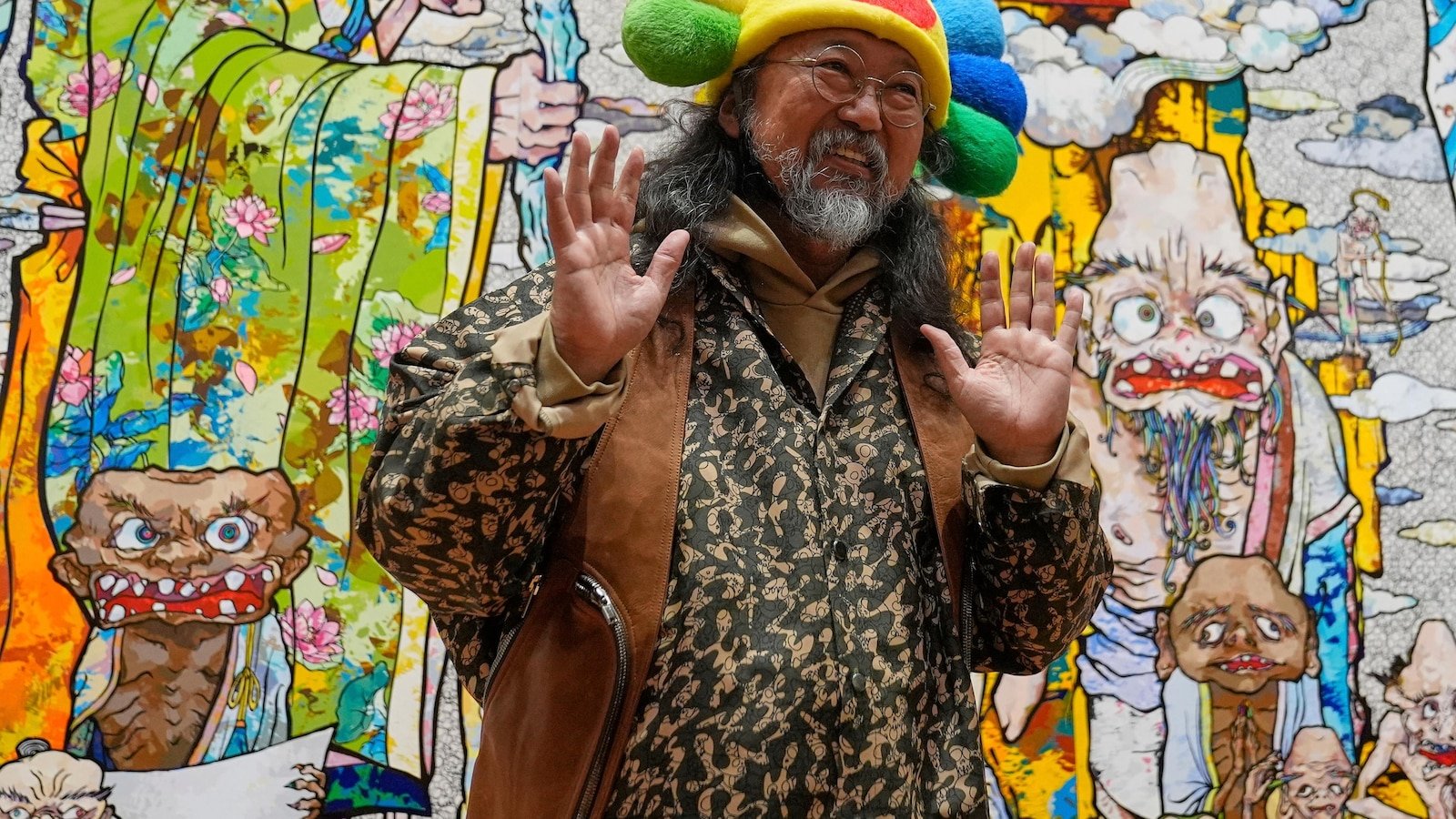Cleveland – The Japanese contemporary artist Takashi Murakami has never limited himself to a medium, creating paintings, sculptures, luxury products with fashion houses such as Louis Vuitton, album covers and an exclusive marketing Collection with Major League Baseball.
Now, it has filled an American museum room with portraits in all colors as part of an exhibition that opens Sunday at the Cleveland Museum of Art. “Takashi Murakami: Preading the tail of an rainbow,” an update of an exhibition that is shown for the first time in Los Angeles, presents more than 100 works of reach.
Murakami, known for its icon of rainbow -colored flowers, in intentionally happy layers with historical events linked to trauma, told Associated Press.
Art explores the impact of trauma on people and culture, said Ed Schad, manager of curators and publications of the Museum of Contemporary Art The Broad in Los Angeles.
The portraits “have historical roots and that they could actually tell you a lot about what a society is doing, how healthy a society is, what a society is answering,” said Schad. “To what society is responding more frequently in this exhibition is the idea of trauma.”
A sculpture represents Murakami and his dog with half of his bodies anatomically, showing his bones and organs, while the other half are his external appearances. The sculpture, Pom and I, is described as the interpretation of Murakami of his experience in the West through the lens of his Japanese identity.
Square portraits with cartoon flowers with facial expressions cover a wall of the exhibition, organized by background color to create an iris rainbow effect. A flower is cleaning a tear of his eye, while another seems to be a zombie. One has blood dripping from his mouth. One seems to be amazed seeing fireworks.
Although there are no obviously direct visual references to historical events, the museum said that art can be seen through the lens of three events in Japanese history: the atomic bombings of Hiroshima and Nagasaki for the United States during World War II, the Tōhoku earthquake of 2011 and Tsunami, which lead to the nuclear accident of Fukushima Daiichi and the Co-Valo-19-19.
Murakami said it is a bit misunderstanding that his work “is very easy and very popular.”
“But this is fine because this is one of my tricks,” he said.
What someone could admire about his art when he was a child, Murakami said, would probably not what an adult admires.
Before entering the exhibition on the lower floor of the museum, visitors can walk through a Yumedono version, the octagonal building in the Horyuji temple in Nara, Japan. Murakami said he was inspired to create the structure after watching the 2024 television series “Shōgun.”
Within the structure there are four new paintings: “Blue Dragon Kyoto”, “Vermillion Bird Kyoto”, “White Tiger Kyoto” and “Black Tortoise Kyoto”, created between 2023 and 2025.
The ticket display extends until the beginning of September.





